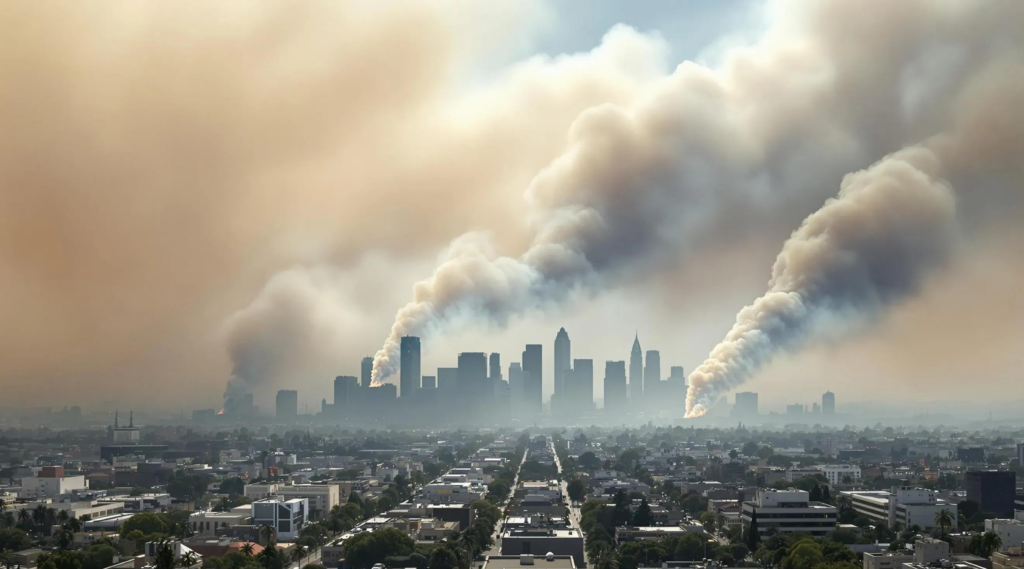The recent fires in Los Angeles have taken a devastating toll, with fatalities now rising to 16. These fires are not only causing immediate loss of life, but they also have long-term health implications. Air quality in the region has plummeted, affecting residents, first responders, and survivors alike. In this article, we will explore the severe health impacts of smoke inhalation and burns, the strain on healthcare facilities, the psychological toll on survivors and responders, and the long-term risk of chronic respiratory diseases.
This tragedy underscores the need for greater awareness and immediate action to protect those impacted by this disaster. In this article, we promise to provide key insights into the ongoing crisis, helping you understand its full scope and how to contribute to relief efforts.

Inhalation of Smoke and Severe Burns: Leading Causes of Fatalities in Fires
In fires of such magnitude, air quality is significantly compromised, leading to a dangerous combination of smoke inhalation and severe burns. These two factors are the primary causes of fatalities in such tragic events. Smoke inhalation is particularly deadly, as it leads to the loss of oxygen, poisoning the body with toxic gases such as carbon monoxide and hydrogen cyanide. This can result in fatal respiratory failure if untreated.
Severe burns, particularly when they cover large portions of the body, can also lead to life-threatening complications such as infection, dehydration, and organ failure. The combination of these factors makes fires not only an immediate danger but a prolonged one for those who survive the initial disaster. The air quality deteriorates so quickly that even people who are miles away from the fire find themselves breathing in hazardous pollutants.
Hospitals on High Alert: Rising Cases of Respiratory Issues Among the Injured
As the fires continue to rage, hospitals in Los Angeles are being stretched to their limits, with an increasing number of people suffering from respiratory issues due to the air quality. The smoke-filled air is causing exacerbated asthma attacks, bronchitis, and other breathing complications, leading to a surge in emergency room visits. Hospitals are reporting an overwhelming number of patients who are experiencing shortness of breath, chest pain, and severe coughing.
The healthcare system is facing unprecedented pressure, as it not only treats burn victims but also deals with the mounting cases of respiratory distress. Emergency rooms are on high alert, and many hospitals are preparing for an even greater influx of patients in the coming days. As air quality remains dangerously poor, the situation is expected to worsen, putting further strain on medical staff and resources.
Stress and Psychological Trauma Affect Survivors and First Responders
While the physical health impacts are severe, the psychological toll of such a disaster cannot be overlooked. Survivors of the fires, as well as the first responders who risk their lives to save others, are facing an overwhelming burden. Many survivors are grappling with grief, trauma, and post-traumatic stress disorder (PTSD), as they deal with the aftermath of losing their homes, possessions, and loved ones.
First responders, too, are not immune to the mental health challenges of this disaster. Firefighters, paramedics, and other emergency personnel are experiencing high levels of stress and anxiety as they work in dangerous and high-pressure conditions. The trauma of witnessing the destruction and the loss of life can have long-lasting effects on both survivors and responders. The crisis is not only a matter of physical recovery but of mental health, which requires immediate and ongoing attention.
Risk of Chronic Respiratory Diseases in Smoke-Affected Areas
The effects of prolonged exposure to poor air quality will not disappear once the fires are extinguished. The people living in the affected areas are at significant risk of developing chronic respiratory diseases due to the ongoing inhalation of smoke and pollutants. Fine particulate matter (PM2.5) from the fires can linger in the air for weeks, causing long-term damage to the lungs and exacerbating existing conditions like asthma and bronchitis.
In addition, exposure to toxic fumes can increase the risk of cardiovascular diseases, strokes, and even certain cancers. As the air quality remains compromised, residents in affected neighborhoods are encouraged to take preventive measures, such as staying indoors, using air purifiers, and wearing masks. The long-term health consequences will be felt for years to come, highlighting the need for ongoing health monitoring and intervention.
Community Action and Awareness Are Key
The fires in Los Angeles are a tragic reminder of the importance of community preparedness and the need for collective action. As fatalities rise and air quality continues to deteriorate, it is crucial for residents, emergency workers, and healthcare professionals to unite in support of the victims. This crisis highlights the importance of raising awareness about the dangers of air quality and taking steps to mitigate the health impacts in affected areas.
If you are able, please consider contributing to relief efforts to help those affected by the fires. Your support can make a significant difference in the lives of those who are struggling. Stay informed, protect your health, and take proactive steps to help mitigate the impacts of future tragedies.
The Hidden Impact: How Environmental Disasters Shape Health

